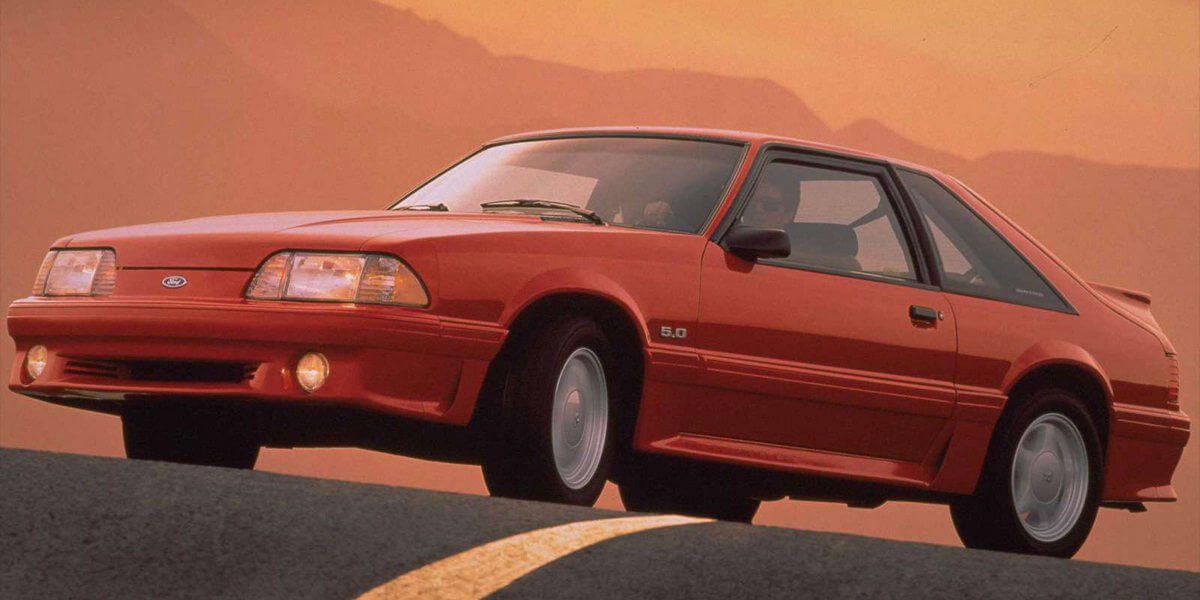
For years, classic car experts and muscle car connoisseurs were largely avoiding the Ford Mustang Fox Body. However, recently, Ford's eponymous third-gen pony car is back in the car community's spotlight and enjoying a steady rise in prices. Born in the darkest days of American performance, Fox Body Mustangs evolved into a very competent muscle car that marked the renaissance of Detroit's octane wars. During its 14-year-long production run, Fox Body remained true to its formula, managed to transcend its limits, and became a cultural icon as well as muscle car legend. That is why it deserves a closer look.
When Ford introduced Mustang II in 1974, muscle car enthusiasts were outraged. Their favorite pony car didn't even have a V8 option at first. Even though the Mustang II sold well and helped the breed survive the '70s, it was slow, pathetic, underpowered, and disgraceful in every way. Ford knew it needed to do much better.
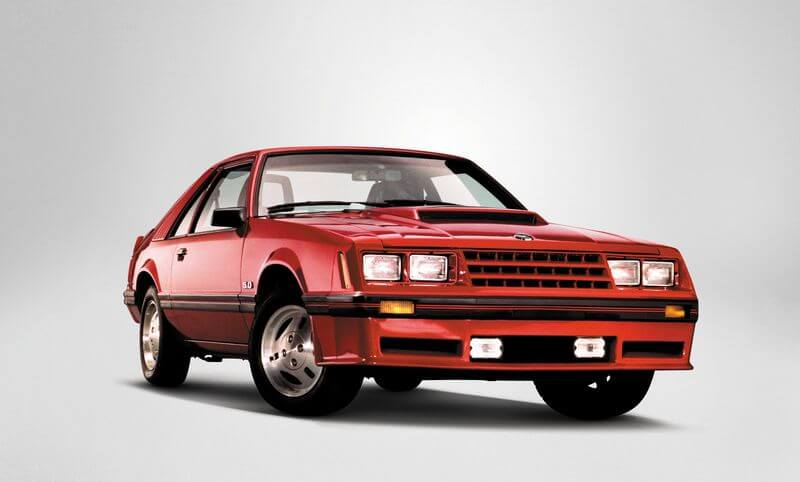 1982 Ford Mustang GT
1982 Ford Mustang GTFour-Eye Mustangs (1979 – 1986)
When the 1979 model finally arrived, fans were happy with what they saw. The third-gen Mustang was much advanced, more aerodynamic, better built, and although it retained a live rear axle setup, it handled better. New Mustang used Ford's Fox platform (hence the name Fox Body), designed as a foundation for several compact and mid-size models. The new Mustang was offered as a coupe (Notchback) or three-door Hatchback. The convertible didn't enter the lineup until the 1983 model year.
The engine range started with a 2.3-liter four-cylinder with just 86 hp, but a 5.0-liter V8 as a top offering with 140 hp. Even though the performance was inadequate, it was up to par with the competitors, and the 1979 Mustang showed that Ford was serious about this model. The introduction of the Cobra trim level, powered by a 2.3-liter turbocharged four-cylinder, was a step in the right direction, although it only had 132 hp and 0 to 60 mph time of around 9.5 seconds.
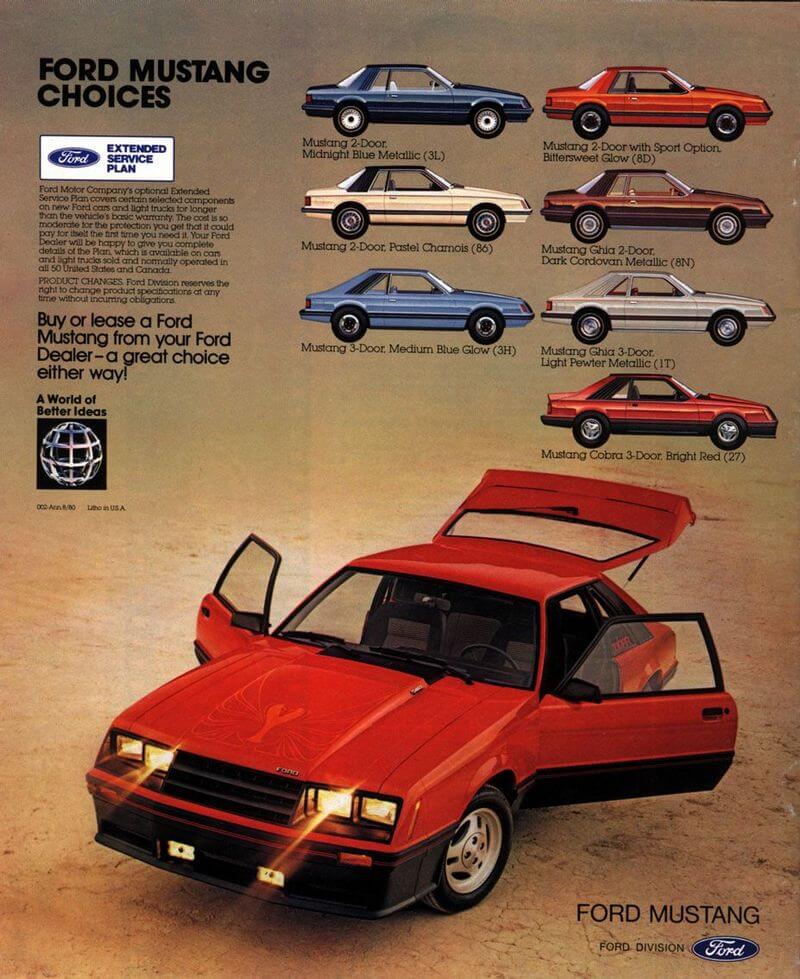 1981 Ford Mustang Ad
1981 Ford Mustang AdThe new approach proved to be smashing success, and Ford was swept with orders. The 1979 Mustang production was almost 370,000 cars, doubling the output of the 1978 model. Customers loved the fact that Mustang had impressive driving dynamics, a wide range of engines (four-cylinder, V6, straight-six, and V8 units), several trim levels, and packages.
The defining moment of the whole Fox Body generation and muscle car culture came in 1982 when Ford decided to reintroduce the GT package for the Mustang. Absent since 1969, Mustang GT was remembered as a potent model, characterized by the classic V8 rumble and unique trim details. A 5.0-liter V8 powered the 1982 Mustang GT with 157 hp, a far cry from late '60s models, but still managed to extract decent 0 to 60 mph times and looked great with front and rear spoiler, big hood scoop, and aggressive stance.
Another important model from that early Fox Body era is Mustang SVO. Designed by a newly-formed Special Vehicle Operations team, it was a highly advanced turbocharged Mustang, powered by a 2.3-liter four-cylinder with 175 hp (205 hp in later models), revised suspension, brakes, and unique front and rear-end design. The Mustang SVO was the favorite of the motoring press and showed the Fox platform's potential and modern technology. However, it cost significantly more than the comparable GT and had similar performance, so buyers turned to a well-known V8-powered package instead. That is why Ford sold just fewer than 10,000 examples in a three-year production run.
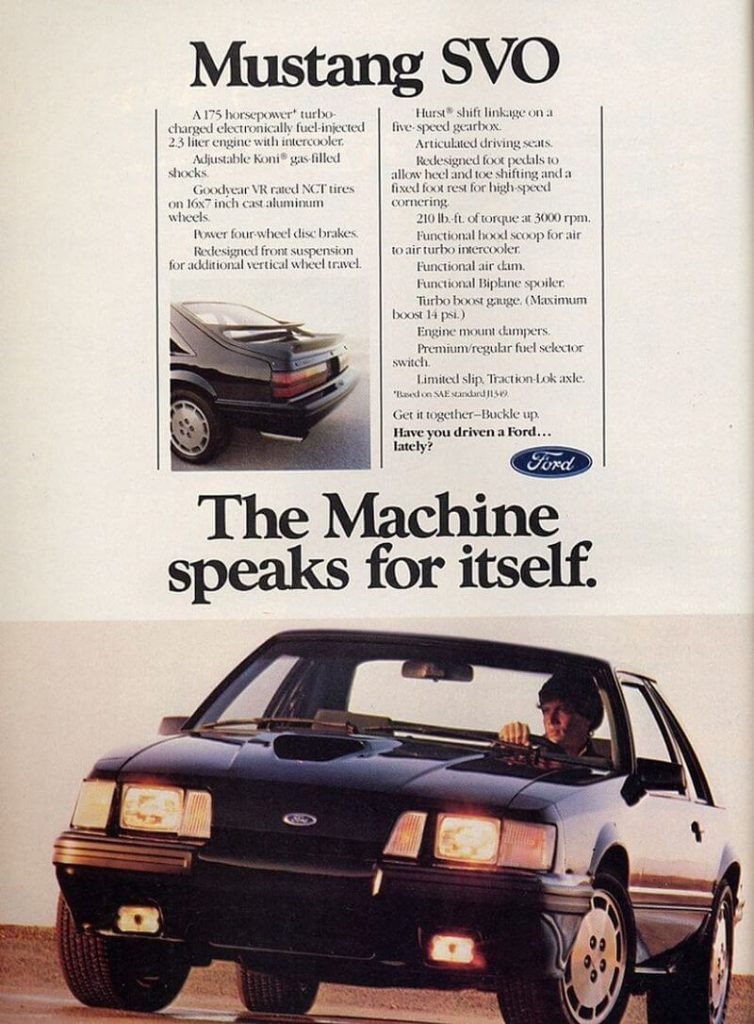 1984 Ford Mustang SVO ad
1984 Ford Mustang SVO adAero-Nose Mustang (1987 – 1993)
In 1987 the whole Mustang lineup received a long-overdue redesign. With a new, more aerodynamic, single headlights look (as opposed to the 4-headlights design of earlier models), Ford introduced two trim levels, two engines but retained three body styles. The interior was also new and ergonomically improved. The base LX, which was available as Notchback coupe, hatchback, or convertible with 2.3-liter four-cylinder (5.0 V8 was an option) and GT, could be had as hatchback or convertible (V8 was standard). GT models are easily identified by unique ground effects body trim with round fog lights in the front bumper.
However, the biggest news was under the hood. The 5.0-liter V8 engine received recalibrated fuel injection, different heads, and an engine management system, which resulted in 225 hp and 300 lb-ft of torque. In the late '80s, those were serious numbers, and it finally had performance worthy of the Mustang name. With 0 to 60 times of 6.5 seconds and a top speed of around 140 mph, Mustang GT could scare more than few Porsche and Corvette owners back in the day.

That kind of performance in stock form ensured that the Fox Body Mustang gained a strong street racing reputation. The 5.0-liter V8's design welcomed modifications, and all of a sudden, there was a whole industry of aftermarket components and parts designed to make your 5.0 Mustang much faster than stock. Most of the original owners never managed to resist the temptation, and that is why you see so many modified Mustangs from that period.
1993 SVT Cobra
From 1987 to the end of the production, in 1993, Ford did practically nothing in terms of improving the Mustang. The engine lineup and range stayed the same, as well as design and features. However, this didn't mean that Fox Body would retire quietly, and in 1993 Ford presented the limited edition SVT Cobra model. This was the car the fans have been waiting for decades, and it was the first proper high-performance Mustang since the early '70s Mach I and Boss 302.
 1993 Ford Mustang SVT Cobra
1993 Ford Mustang SVT CobraPowered by a highly tuned version of the popular 5.0-liter V8, SVT Cobra was underrated at 235 hp, and its 5.6 seconds 0 to 60 mph time prove that Ford's rating was very conservative. Besides the engine, the Special Vehicle Team did extensive work on handling, steering, and braking improving driving dynamics significantly. The SVT Cobra was marketed as a unique model and was available only as a hatchback with unique body trim, front bumper, and rear spoiler and offered in three special colors (red, black, and teal). Available only as of the 1993 model, Ford sold exactly 4993 cars.
Production Numbers
The Fox Body was made for 14 years, and it is by far the Mustang generation longest life span. During that period, Ford has produced over 2.6 million units, which makes it the second most popular Mustang model. However, due to the fact that those cars were rust-prone and that a significant amount was street raced, crashed, and crudely modified, the existing number of presentable examples is quite low. Collectors mostly concentrate on later models, Cobras and LX Notchbacks, with 5.0 engines. As always, the most sought-after are low-mileage and stock examples with original paint, body panels, and clear history.
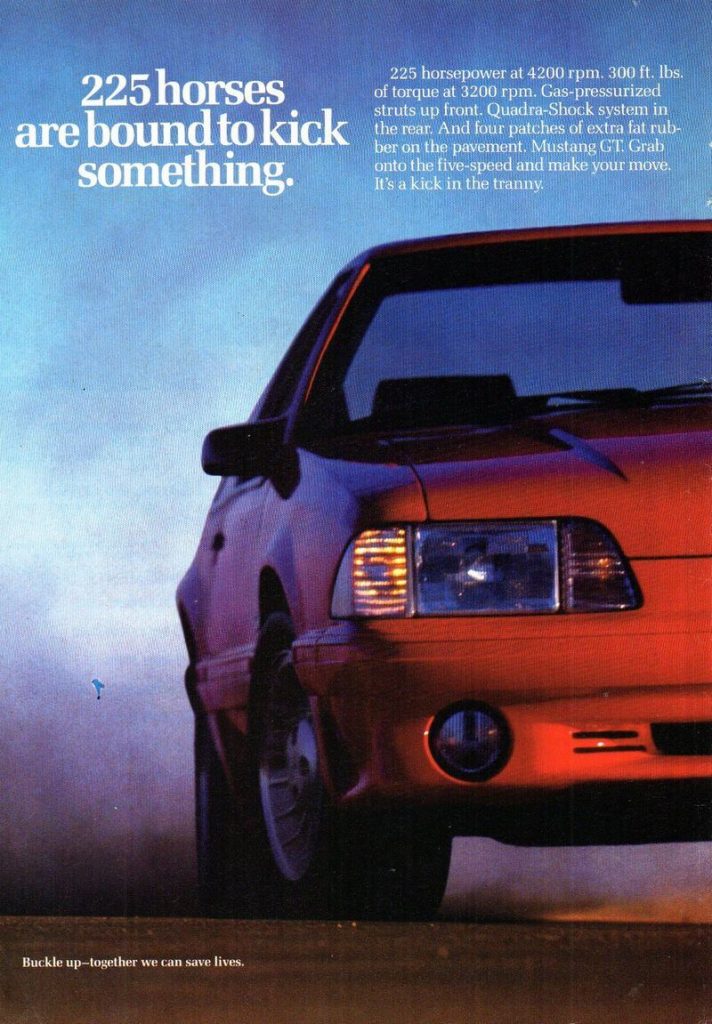 1990 Ford Mustang Ad
1990 Ford Mustang AdLast Words
Even though Mustang Fox Body was a bit underpowered when compared to previous models, it effectively put Ford back on the right path when it comes to true American power. Fans of the brand were reluctant at first, especially when they realized that a V8 wasn't even offered on the earlier models. However, it's important to keep in mind that competitors from this era were also quite bland. Ford seems to have learned from its mistakes and brought the Mustang back from the dead as years went by. With that being said, even today, the Foxbody seems to be quite controversial, even amongst true pony car enthusiasts. Nonetheless, no matter whether you like it or not, no one can argue against the fact that the 3rd-gen Mustang had a significant impact in its time and continued to do so for years later.
